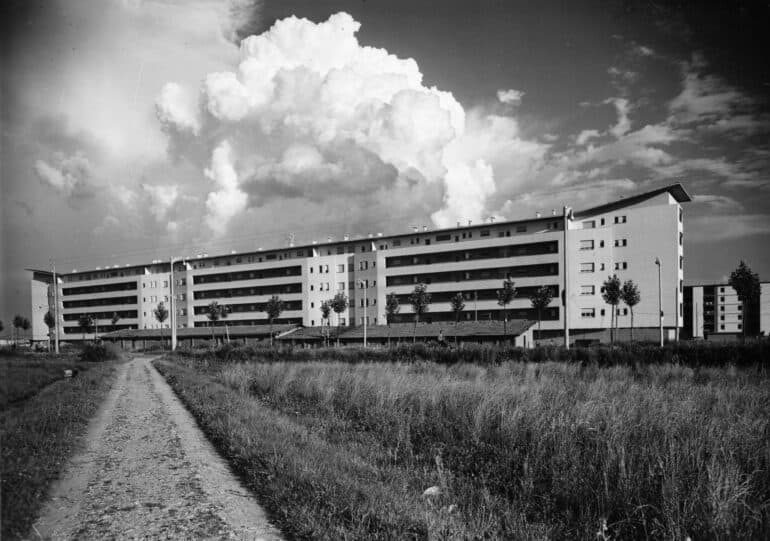Gio Ponti’s legacy told through a major retrospective at MAXXI
“Love architecture, be it ancient or modern. Love it for its fantastic, adventurous and solemn creations; for its inventions; for the abstract, allusive and figurative forms that enchant and enrapture our thoughts. Love architecture, the stage and support of our lives.” G.Ponti
A major retrospective of the brilliant Italian architect Gio Ponti is on display in the MAXXI Gallery, boasting a boundless display of archival materials such as original wooden and card models, photography, books, magazines and hand-drawn illustrations. Ponti was a larger-than-life character, who used his bedroom as a studio and who’s staff parked their vespas next to their desks! He had a grasp on the bigger picture and designed everything from cutlery to cathedrals, chairs to shopping malls. His legacy in terms of design and innovation was peerless.
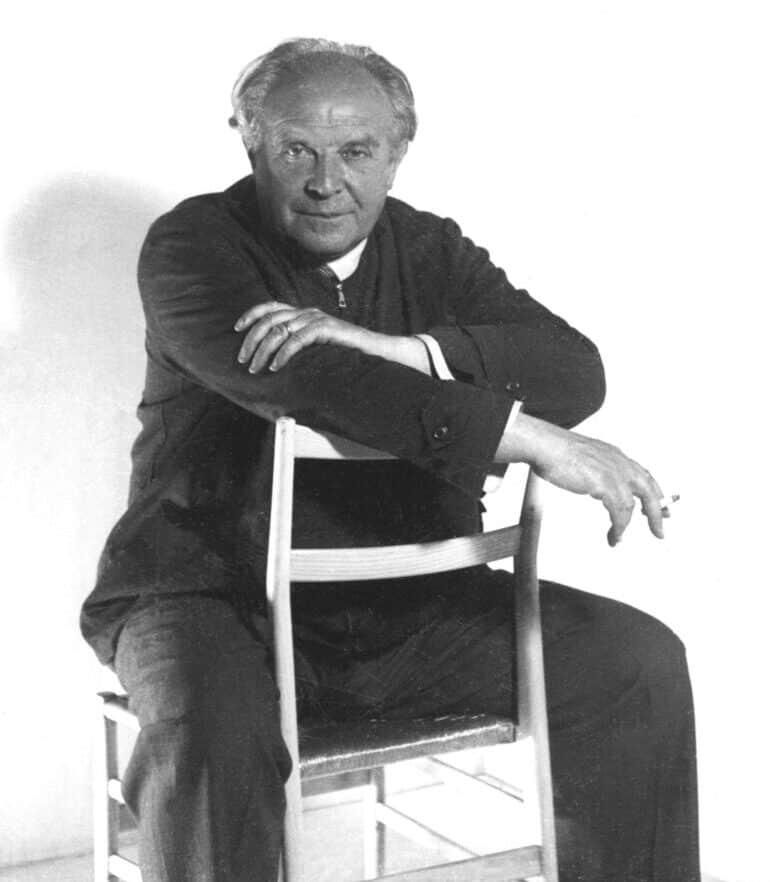
His life was extraordinary and spanned almost the entire 20th century. He was born in Milan in 1891 and his illustrious career covered six decades. He lived through both World Wars; his university studies were interrupted by the first, where he served as a Captain and won medals for his bravery. He then returned to Milan’s Politecnic University where he completed his degree in Architecture in 1921 and in the same year married his wife of over fifty years. His career was in full swing when the second world war struck. He turned to writing and other creative pursuits, for example developing set designs for Stravinsky’s ballets. He also founded the magazine Domus and developed this enterprise throughout his life. In the fifties he was a leader of the Italian cultural renaissance and was a zealous advocate for the Italian art of living. He built more than one hundred buildings in Italy and across the world and his creations are known for having had an indelible and evolving effect on the modern world.
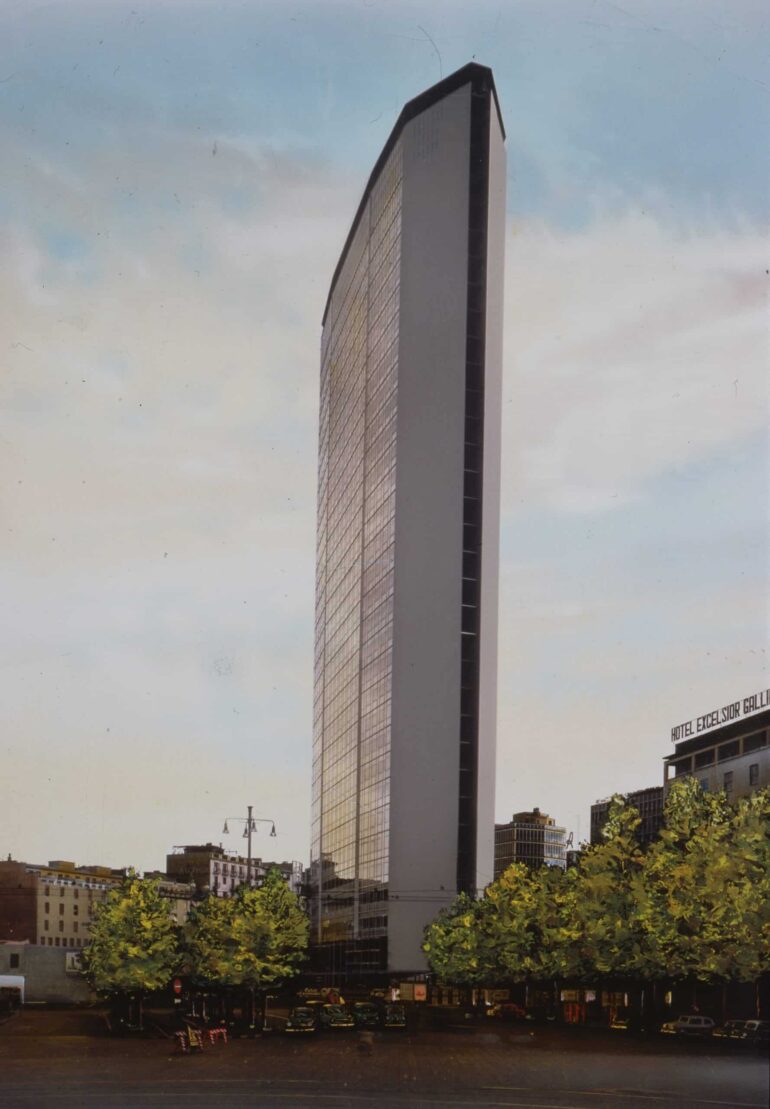
© Gio Ponti Archives
The exhibition of his life’s work is being held on the top floor of the Art Gallery designed by architect Zaha Hadid. You approach the entrance by crossing a bridged corridor with bright yellow floors which are a reproduction of the giallo fantastico (fantastic yellow) linoleum flooring used for the Pirelli Tower in Milan. Hanging from the ceiling are giant skyscraper banners which reach the full height of the building and evoke the skyline of an imaginary Pontian city. The exhibition is structured thematically instead of chronologically and the space has been organised according to Ponti’s principles of design: dynamic, fluid and colourful. The combination of Ponti’s life’s work in a building designed by Hadid makes for a unique meeting of minds as the archistars visions collaborate to create a memorable gallery experience.
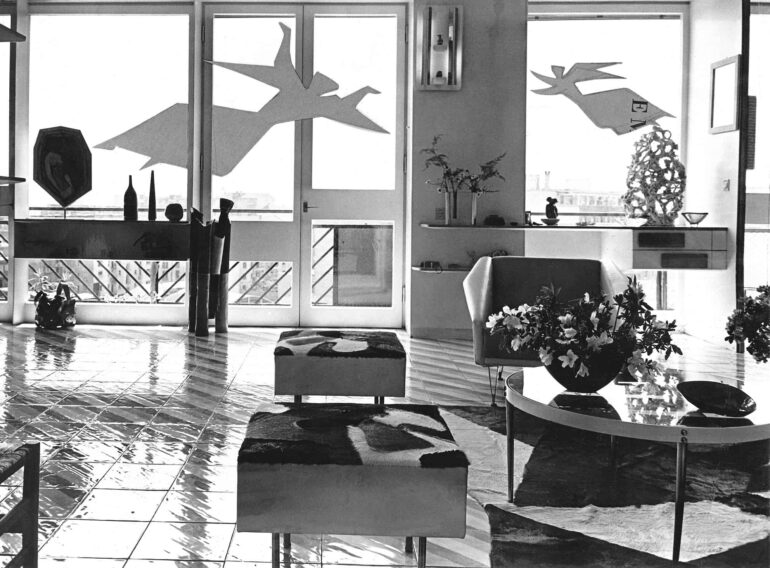
© Gio Ponti Archives
The first section of the exhibition is Towards the Exact House which explores Ponti’s vision of a minimalist modern home, foreshadowing the concepts of contemporary architectural practise. He believed in a flexible domestic space which adapts to the demands of life. He was inspired by the women in his life and consulted them when considering the construction of a house. In a discreet video interview dispersed throughout the gallery you can hear him argue the benefits of affordable housing which, he claims, are contrary to popular belief, the most effective way to achieve aesthetic perfection. The curation includes colourful card models of graphic cities and small personal spaces side by side. There are also images and designs from Ponti’s own house on Via Dezza, part of which has been recreated as an installation within the exhibition. One of his innovative designs were “organised walls” which doubled as bookshelves, this idea was applied to window frames, turning them into transparent walls which connected the inside and outside.
The exhibition continues by demonstrating the osmotic relationship between nature and architecture, most clearly illustrated in his design for the Villa Planchart in Venezuela. This house is a love letter to Italy, bringing the elements of Mediterranean living to a tropical climate. The central courtyard acts as a cool space, almost a cave, which keeps the whole property fresh without the need for air conditioning. The archive of Ponti’s work is complemented by a parallel exhibition of contemporary photography curated by Paolo Rosselli which allows us to appreciate Ponti’s volcanic body of work through the lens of modernity.
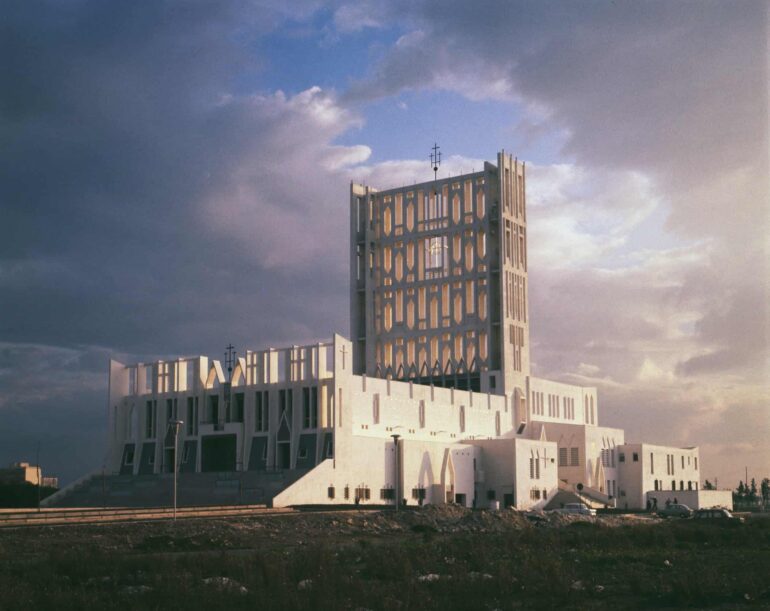
© Gio Ponti Archives
All of Ponti’s designs from the Superleggera Chair to the Pirelli Tower aspire to lightness and verticality, often achieved through a dematerialisation of facades. In fact, Ponti believed that “the facade belongs to the passersby, after all, architecture is made to be looked at.” This fascination with the legerezza of the exterior of a building seems to cumulate with the remarkable Cathedral in Taranto, where the two-dimensionality of the walls make them look like sheets of paper, folded and cut like origami.
The beauty of this exhibition is the sheer wealth of information on display, I am sure on a second visit I would discover an entirely different collection of work, but let me leave you with some final treasures to inspire your visit. In an illustration of a glass skyscraper, Ponti includes charcoal sketches of fluffy clouds to give his drawing the sensation of the heavens his structure will reach. In one magazine clipping you see his designs for a “house in a wardrobe” permitting the entire furnishings of a house to fit in a single unit, preempting and surpassing Ikea in his grasp of functional living. There are tiny illustrations of people to be found in his windows and interiors, occupying his imaginary spaces. He designed a series of “liveable machines” namely transatlantic boats to take the world on new adventures and constructed a city of education, allowing the historic centre and the ideas of the future to co-exist. Don’t miss the chance to learn about this exceptional man who’s creativity changed our world in ways we don’t even realise.
Till September 27, 2020
In May 2020 the exhibition reopens to the public on the following days > 22-23-24 /29-30-31. And from 2 June on the usual museum opening days and hours.
MAXXI
Via Guido Reni, 4/a
Tue, Fri, Sat: 11am-8pm; Wed, Thur, Sun: 11am-7pm
Entry Fee: €9-12


